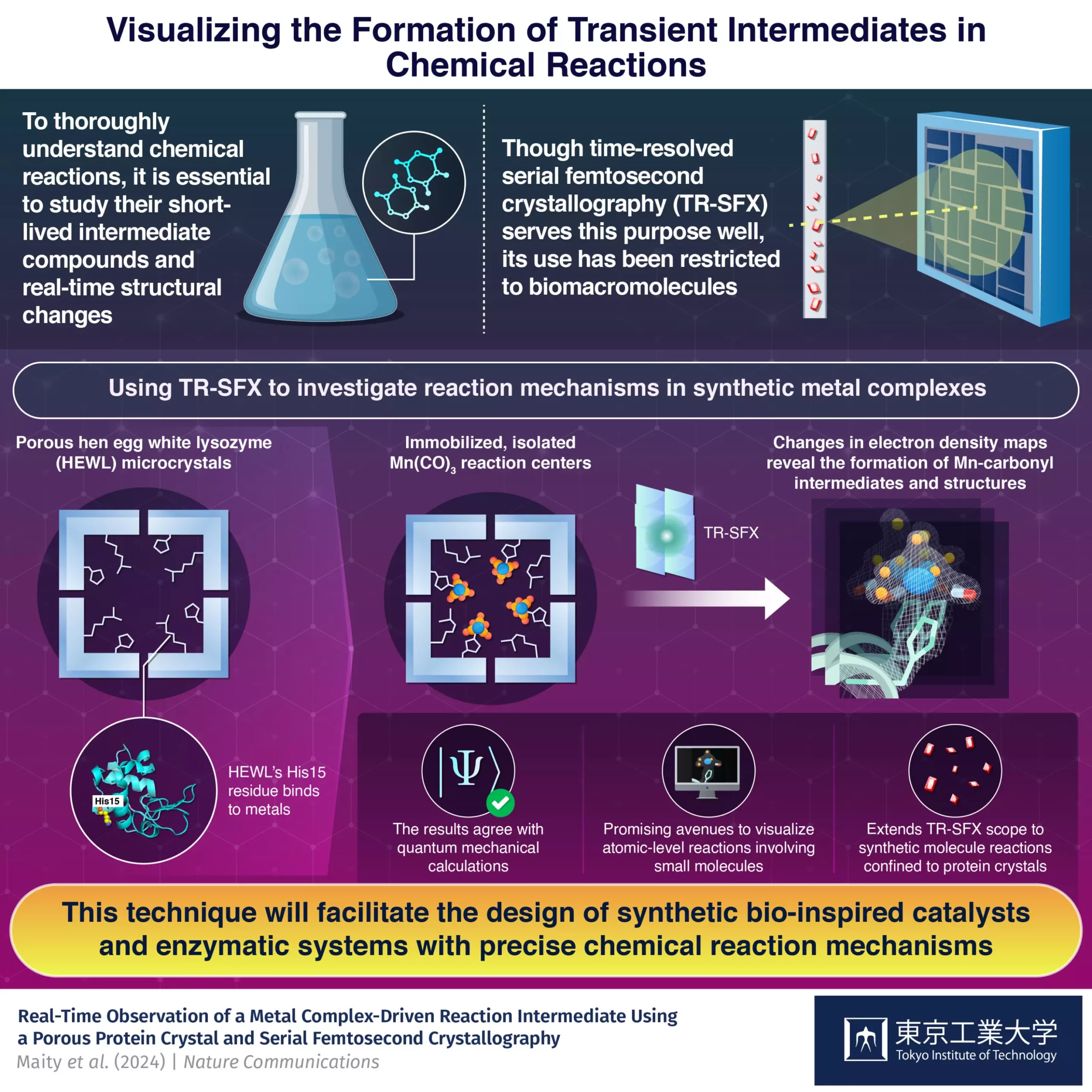The integration of small synthetic molecules inside protein crystals is proving to be a groundbreaking method for studying intermediate compounds formed during chemical reactions. Researchers at Tokyo Tech have successfully visualized reaction dynamics and rapid structural changes by combining this approach with time-resolved serial femtosecond crystallography. This innovative strategy has immense potential for advancing the design of drugs, catalysts, and functional materials.
In the realm of chemistry, most reactions do not occur in a straightforward manner where reactants transform directly into products. Instead, they often involve the formation of short-lived intermediate compounds that undergo further transformations before reaching the final desired products. Understanding these stepwise processes is crucial for progress in fields such as energy generation, catalysis, and medicine.
One of the major challenges in studying chemical reactions is the ability to visualize short-lived intermediates, especially when trying to capture atomic-level structural changes in molecules. Time-resolved serial femtosecond crystallography (TR-SFX) emerges as a cutting-edge method to achieve this feat. By directing fast electron laser pulses at crystallized molecular structures and capturing the resulting diffraction patterns, researchers can monitor reaction dynamics in real time.
While TR-SFX has primarily been used for analyzing biomacromolecules, a research team led by Professor Takafumi Ueno from Japan sought to broaden its applications to synthetic compounds. By focusing on studying the dynamics of carbon monoxide (CO) release from Mn(CO)3, the team aimed to showcase the versatility of TR-SFX for non-biomolecular systems.
A significant hurdle faced by the researchers was the preference of TR-SFX for microcrystals, typically formed by biomacromolecules. Additionally, crystals of small molecules tend to be densely packed, limiting the space for reactions to take place effectively. To address these challenges, the team devised a novel approach utilizing hen egg-white lysozyme (HEWL) as a matrix.
HEWL, a naturally occurring protein that crystallizes into a nanoporous structure suitable for TR-SFX, was used to immobilize a light-sensitive Mn(CO)3-containing compound inside its crystals. This setup provided an ideal environment for studying CO release reactions triggered by controlled light pulses synchronized with the TR-SFX electron laser pulses. The researchers successfully analyzed changes in electron density maps obtained through TR-SFX, allowing for a detailed examination of the reaction intermediates.
The experimental findings aligning with quantum mechanical calculations validate the effectiveness of the proposed strategy. The researchers demonstrated that by utilizing protein crystals as a host matrix, it is possible to study the reactions of synthetic metal complexes and elucidate intermediate structures. This advancement opens new possibilities for designing artificial metalloenzymes with precise mechanisms, offering insights that can revolutionize the development of innovative reactions involving non-biological components.
The method developed by the Tokyo Tech team heralds a revolutionary approach to studying chemical reactivity through protein crystal immobilization. By combining the unique properties of protein crystals with cutting-edge techniques like TR-SFX, researchers can gain unprecedented insights into complex chemical reactions. This advancement not only enriches our understanding of reaction mechanisms but also paves the way for the intelligent design of future drugs, catalysts, and enzymatic systems. The possibilities


Leave a Reply